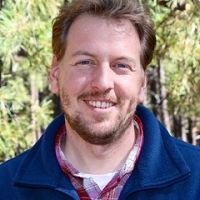Sanchez-Canete et al., 2018
A considerable fraction of soil-respired CO2 is not emitted directly to the atmosphere
Sánchez-Cañete E.P., Barron-Gafford G.A. & Chorover J. (2018)
Scientific Reports 8: 13518
-
Catalina-Jemez, INVESTIGATOR
-
Catalina-Jemez, INVESTIGATOR
Abstract
A diagram, with the main variables involved in exchange and loss of CO2. The ratio of soil CO2 efflux to O2 influx, known as the apparent respiratory quotient (ARQ), allows one to estimate the CO2 losses from Rsoil.
Soil CO2 efflux (Fsoil) is commonly considered equal to soil CO2 production (Rsoil), and both terms are used interchangeably. However, a non-negligible fraction of Rsoil can be consumed in the subsurface due to a host of disparate, yet simultaneous processes. The ratio between CO2 efflux/O2 influx, known as the apparent respiratory quotient (ARQ), enables new insights into CO2 losses from Rsoil not previously captured by Fsoil. We present the first study using continuous ARQ estimates to evaluate annual CO2 losses of carbon produced from Rsoil. We found that up to 1/3 of Rsoil was emitted directly to the atmosphere, whereas 2/3 of Rsoil was removed by subsurface processes. These subsurface losses are attributable to dissolution in water, biological activities and chemical reactions. Having better estimates of Rsoil is key to understanding the true influence of ecosystem production on Rsoil, as well as the role of soil CO2 production in other connected processes within the critical zone.
Citation
Sánchez-Cañete E.P., Barron-Gafford G.A. & Chorover J. (2018): A considerable fraction of soil-respired CO2 is not emitted directly to the atmosphere. Scientific Reports 8: 13518. DOI: 10.1038/s41598-018-29803-x
 This Paper/Book acknowledges NSF CZO grant support.
This Paper/Book acknowledges NSF CZO grant support.
Explore Further



